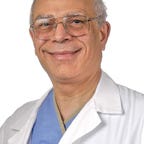Deep Venous Thrombosis & Virchow’s Triad
There are three factors thought to contribute to deep venous thrombosis. These are endothelial injury, venous stasis, and hypercoagulability. Collectively, these three factors are called the Virchow’s triad.
Deep venous thrombosis and/or blood clots form in the deep veins, usually in the legs. Deep veins pass through the deep tissues and the muscles. Although deep venous thrombosis (DVT) predominantly occurs within veins in the legs, it may also occur in the upper extremities.
Muscle contractions, such as walking, running, activity, etc., squeeze blood through the deep veins to the heart. The deep veins have valves, which prevent the blood from flowing back to the feet and ankles. DVT is the formation of a blood clot (thrombus) within a deep vein. The majority of blood clots that form are small, and they are usually broken down or dissolved. However, large clots may form. And these can block the vein, causing the patient to complain of pain and swelling in the area of the clot. The blood clot can break free into the body’s bloodstream. The clot may detach partially or totally (embolism). The detached blood clot may travel from the deep veins to the heart, and then finally lodges itself in the pulmonary artery of the lungs. This can in turn can cause permanent damage to the lungs. In some cases, the clot will pass through the heart to the aorta and create emboli in the brain (patent foramen ovale). Additionally, some clots may be silent and show no symptoms.
So what contributes to the development of the deep venous thrombosis? The three elements that make up the Virchow’s triad contribute to the development of a deep venous thrombosis. However, one element of the triad may contribute more than the others. Also, platelet dysfunction is not part of the Virchow’s triad.
Endothelial injuries are secondary to injury, trauma, or surgery. They induce thrombosis, and may occur due to manipulation of fractures, dislocation, from placement of retractors, or from pressure on the tissues during surgery.
Venous stasis will lead to platelet contact with the endothelial lining such as with use of a tourniquet, hypotension, or with knee flexion during surgery. It occurs with impaired mobility, often in the elderly. Immobility will cause the venous circulation to slow down and the clotting factors in the blood to clump together, ultimately leading to a deep venous thrombosis. In my opinion, the most important factor to prevent a blood clot is to maintain the patient’s mobility. It is important to get the patient up out of bed and moving around when possible, either on their own or with crutches. This is a simple prevention step!
Hypercoagulability can come in the form of tissue debridement, collagen, fibrinogen, and tissue thromboplastin. It also includes blood diseases, such as protein S and protein C deficiency, as well as Factor V Leiden mutation.
Risk factors for thromboembolism include history of previous thromboembolism, obesity, malignant disease, immobilization, pregnancy, old age, history of congestive heart failure, oral contraceptives, genetic blood diseases (such as genetic hypercoagulable state), and major orthopedic procedures. Some statistics about orthopedic procedures and DVT include that up to 60% of asymptomatic DVT in total joint arthroplasty can occur if the patient is not given prophylaxis, up to 20% of symptomatic DVT can occur without giving the patient prophylaxis for DVT, proximal DVT can occur in abut 15–25% of orthopedic surgery patients, and fatal pulmonary embolism can occur in up to .05%. For example, total knee arthroplasty has a high risk of DVT but has a lower risk of pulmonary embolism compared to total hip arthroplasty. However, when giving prophylaxis for blood clots or DVT, the risk of clotting and development of deep venous thrombosis versus the risk of bleeding need to be compared.
